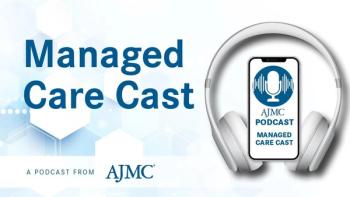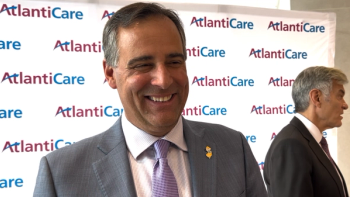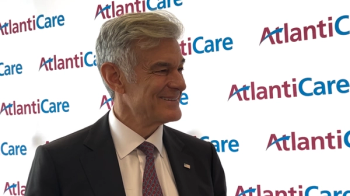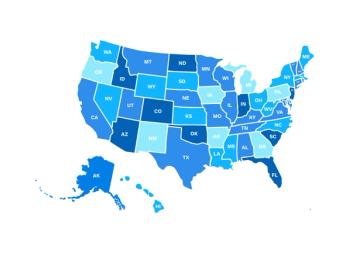
Population Health
Latest News
Latest Videos

Podcasts
CME Content
More News

In this episode, Richard A. Brook, MS, MBA, discusses his study showing that infertility treatment coverage increases assisted reproductive technology (ART) use and improves pregnancy outcomes.

The global incidence, deaths, and disability-adjusted life years tied to metabolic dysfunction–associated steatohepatitis (MASH)-related liver cancer have more than doubled in older adults since 1990, with a heavy impact on low- and middle-income countries.

A qualitative study found strong support for primary care provider–nephrologist comanagement of chronic kidney disease (CKD), but persistent deficits in CKD understanding remain.

Climate-related disasters threaten US drug production, highlighting vulnerabilities in the pharmaceutical supply chain and the urgent need for strategic planning.

Research reveals a significant decline in reported conflicts of interest among the CDC's and FDA's vaccine advisory committees, challenging Robert F. Kennedy Jr's claims.

Public awareness of human papillomavirus (HPV) and its link to cervical and oral cancers is alarmingly low in the US, especially in the Midwest and South.

A new national poll puts on full display the concerns of many parents that their children’s mental health and physical health are worsening, and that social media leads the way as a top cause.

Fetal alcohol syndrome (FAS) is 100% preventable as an environmental cause of intellectual disability and represents the most severe form of fetal alcohol spectrum disorder.

A new American Heart Association initiative is working to increase screening for lipoprotein(a) (Lp[a]) at community health centers nationwide to help address undetected cardiovascular risk.

Investigators discuss how their findings on ovarian cancer mortality trends can guide earlier detection and prevention efforts, while also emphasizing the need for further research.

Prenatal exposure to per- and polyfluoroalkyl substances (PFAS), a class of persistent environmental pollutants, was linked to significant shifts in infant T helper cell development, raising concerns about long-term effects on vaccine response, immune regulation, and disease susceptibility.

A nationwide Danish cohort study demonstrated no increased risk of serious adverse events following vaccination with JN.1-updated mRNA COVID-19 vaccines, reinforcing their safety profile and supporting continued use in high-risk populations amid ongoing viral evolution.

The Commonwealth Fund’s updated July 2025 brief on maternal mortality highlights how systemic disparities, Medicaid coverage gaps, and behavioral health challenges continue to drive poor maternal and infant outcomes across the United States.

Supplemental Nutrition Assistance Program (SNAP) benefits may slow cognitive decline in older adults, highlighting the importance of food assistance in combating Alzheimer disease and dementia risks.

The decline in ovarian cancer mortality rates after 2003 can be attributed to advances in treatment, precision medicine, improved preventive strategies, and a reduced disease incidence, according to Muhammad Faizan, MBBS.

US ovarian cancer mortality declined from 1999 to 2020, but significant disparities remain among older women, non-Hispanic White women, and those living in rural areas, as well as in the Northeastern and Midwestern regions, according to Muhammad Faizan, MBBS.

This global study found rising rates of pediatric hypertension, highlighting obesity's impact and the need for improved monitoring and prevention strategies.

Rural Health Investment, Local Training Are Priorities for South Jersey: State Sen Vincent Polistina
Some hospitals in New Jersey may be eligible for part of the $50 billion CMS spending on rural health care, according to State Sen Vincent Polistina (R, New Jersey).

During a visit to AtlantiCare, CMS Administrator Mehmet Oz, MD, MBA, called for rural health systems to modernize IT infrastructure through the $50 billion Rural Transformation Fund, including through artificial intelligence (AI).

State governments must have budgetary and regulatory flexibility to support health care innovation, says State Sen Vincent Polistina (R, New Jersey).

Mental health, care of acute and chronic conditions, primary care access and prevention, and maternal and perinatal health were identified as key focus areas among a majority of states.

Prenatal exposure to air pollution was associated with childhood obesity risk in a recent study, highlighting the urgent need for environmental health awareness.

Significant gaps in arthritis subtype awareness among US adults underscore the need for improved health literacy and more targeted public health efforts.

US ovarian cancer mortality rates declined from 1999 to 2020, but significant disparities remain across age, race, and geographic regions, highlighting the need for targeted public health efforts.

The market for artificial sweeteners has been projected to increase by almost 75% from 2025 through 2033, or from $3.11 billion to $5.44 billion.






















































